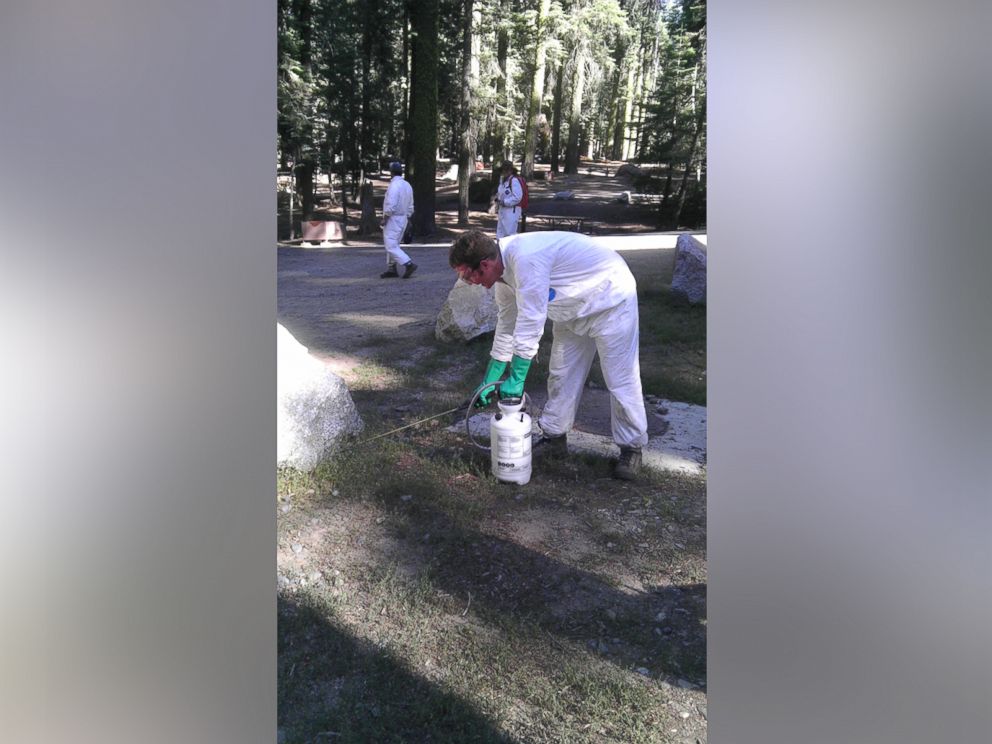Yosemite Works to Rid Campsites of Plague After Camper Infected
Camper who visited Yosemite became infected with the plague last month.
— -- An outbreak of the plague among wildlife at the famed Yosemite National Park has led officials to close down two campsites in an effort to stop the spread of disease to people.
Officials said they are working to protect campers after a child contracted the plague after visiting the park’s Crane Flat campground. Medical experts are attempting to determine if the child’s case can be definitively connected to the cases of plague found in wildlife in the area or if they contracted the bacterial disease at a different location.

Dr. William Schaffner, an infectious disease expert at Vanderbilt University Medical School, said a key component of staying safe while camping is using bug spray and doing everything possible to keep rodents out of a campsite. He said it’s important to keep food clear so that rodents are not attracted to campsites. Additionally, even a dead rodent doesn’t mean it’s safe from causing infection.
“There’s a tendency to want to get rid of it. I would advise not doing that,” Schaffner said, explaining that infected rodents are most dangerous when dead as infected fleas look for their next host. "Don’t try to clean up the area.”
The California Department of Public Health is warning anyone visiting the area in Yosemite to wear bug spray, avoid rodents and to never feed wildlife.
Both the Crane Flat and Tuolumne Meadows campgrounds at Yosemite have been closed after park officials found infected wildlife in the area. They are treating rodent burrows with pesticides in an effort to halt the spread of disease.
Danielle Buttke, a veterinarian epidemiologist with the National Park Service, said squirrels and other rodents are the primary hosts of the disease, which is endemic in the area.
“Studies have shown when you kill squirrels in an area you’re at higher risk for plague,” Buttke explained as to why they target fleas. “The fleas don’t have hosts,” and can jump to people.
Plague is endemic to the area now but not native, and as a result it can have devastating effects on wildlife in the region. Buttke said multiple rodent species have faced extinction as a result of a plague outbreak.
The plague is caused by the Yersinia pestis bacteria and can incubate in a person between two to six days before they show symptoms, experts said. There are three kinds of plague: bubonic, which leads to swollen lymph nodes; septicemic, which leads to a blood infection; and pneumatic, which is when the bacteria settle in the blood and cause pneumonia.
Buttke stressed that human cases of plague in Yosemite park are exceptionally rare with the last confirmed case occurring in 1959.
“It’s not a routine occurrence,” she explained. But “we’re definitely seeing more activity nationwide.”
She said officials are mystified about why there has been a increase in plague cases in the U.S., including two fatal cases this summer in Colorado. One theory is that the long drought has stressed animals and driven them to be closer together and more able to spread the disease.
“The ultimate answer is we don’t know at this time,” she said.
Buttke said park officials are working to develop a new vaccine that will protect wild rodents from the bacterial disease, but that has not been released yet.




